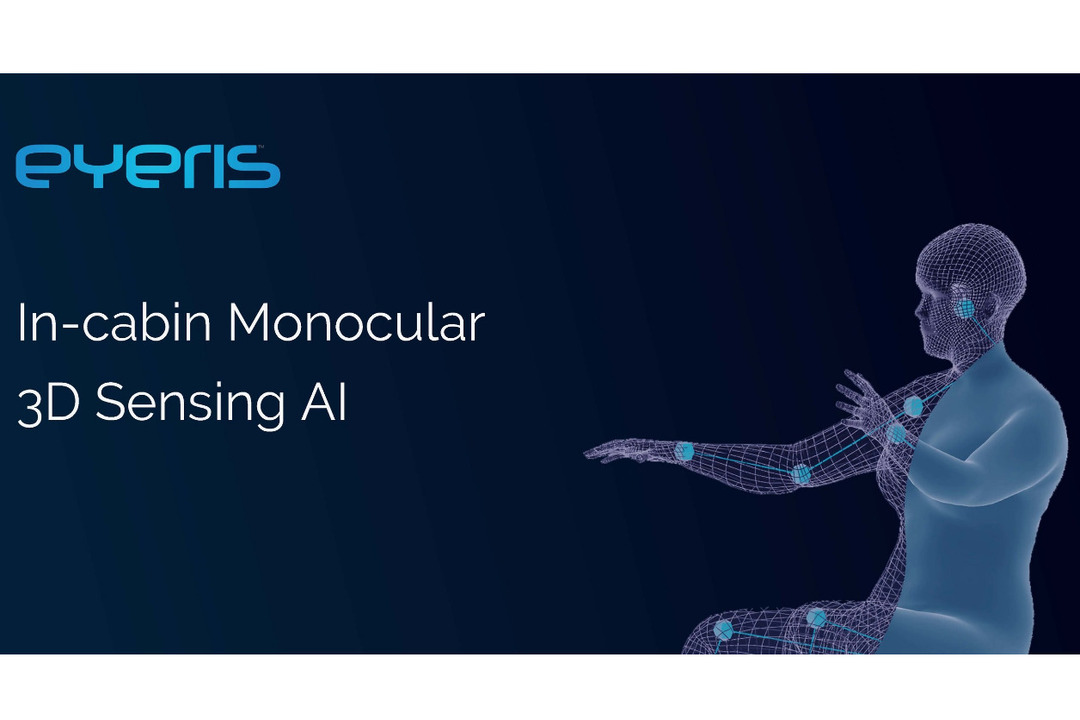MOUNTAIN VIEW – Eyeris Technologies, Inc., a world leader in automotive in-cabin sensing AI, announced today that it will introduce its latest monocular 3D sensing AI software solution at the InCabin event at Autoworld in Brussels on September 15, 2022. Eyeris will have by-invitation meetings and demonstrations to showcase its latest in-cabin sensing AI solutions including the new monocular 3D sensing AI models, which predict depth-aware vehicle interior monitoring features in 3D from a single RGBIR image sensor to further improve in-vehicle safety, comfort and convenience.
Eyeris’ Monocular 3D Sensing AI Solution Addresses Increasing In-cabin 3D Sensing Feature Requirements from Carmakers
3D sensing has been slow to be adopted in car interiors because of industry-known high costs, as well as interference and resolution limitations. Also, 3D sensing historically demands higher computation requirements than 2D. However, there has been a remarkable increase in in-cabin 3D feature requirements, rather than 2D, from car OEMs over the last year, demanding the use of a single RGBIR image sensor, rather than stereo camera, ToF sensors, or others, because of its low cost and high image quality advantages.
Eyeris uses proprietary technology that accurately regresses depth information with 3D output from 2D image sensors, which applies to all in-cabin features. It is achieved through the rigorous collection of naturalistic in-cabin 3D data to train compute-efficient depth inference models that run on AI-enabled processors. The data generated can be used to map the interior of a car, for example, and accurately determine in three dimensions the location of occupants’ faces, bodies, hands, objects, and everything else inside the car.
Eyeris’ monocular 3D sensing features and benefits include:
- Providing automotive OEMs and Tier 1s with robust “depth-aware” 3D data using 2D image sensors
- Enabling 3D accurate location, distance, size, and orientation estimation data, from flexible camera locations
- Providing dynamic interior 3D data transformation from world coordinate system to any OEM-specific camera coordinates (distance relative to the camera)
- Enabling new depth-dependent spatial features and use cases such as 3D in-cabin scene reconstruction, which until now, couldn’t be achieved with 2D image sensors
- Maintaining the same low-computation and power requirements with efficient inference on automotive-grade processors.
“We’re proud to introduce our monocular 3D technology that optimizes sensing performance beyond 2D, with added depth estimation of the entire in-cabin space,” said Modar Alaoui, founder and chief executive of Eyeris.
“This 3D sensing technology enables automotive OEMs with a new host of features that were never available before and further enhances safety and comfort by leveraging additional depth data about driver, occupants, objects, and surfaces using a single 2D RGBIR image sensor. Additionally, this newly introduced technology will help improve the accuracy of the recently mandated driver monitoring and child presence detection features,” added Alaoui.
Eyeris’ In-cabin Monocular 3D Sensing AI Solution has been nominated for the “Most Novel Research” Award at the 2022 AutoSens Awards
Highlighting the exceptional innovation work realized by the Eyeris team across industry organizations and academia, this award nomination by a panel of industry experts is a testament to the impact and significant technology advancements that Eyeris is committing to the In-cabin industry, globally.
“Congratulations to Eyeris on their nomination as a finalist in the Most Novel Research category, their work on monocular 3D sensing is impressive and we are also proud to be working with them as a sponsor of the inaugural InCabin conference taking place this month,” said Robert Stead, Managing Director Sense Media Group.
“Spun out of our successful AutoSens series, this launch InCabin event gives a platform to the key technology developers that are making an impact in automotive safety for drivers and occupants. We are proud to play a role in saving lives, and building a community of experts that will drive this technology forward over the years to come,” added Stead.

